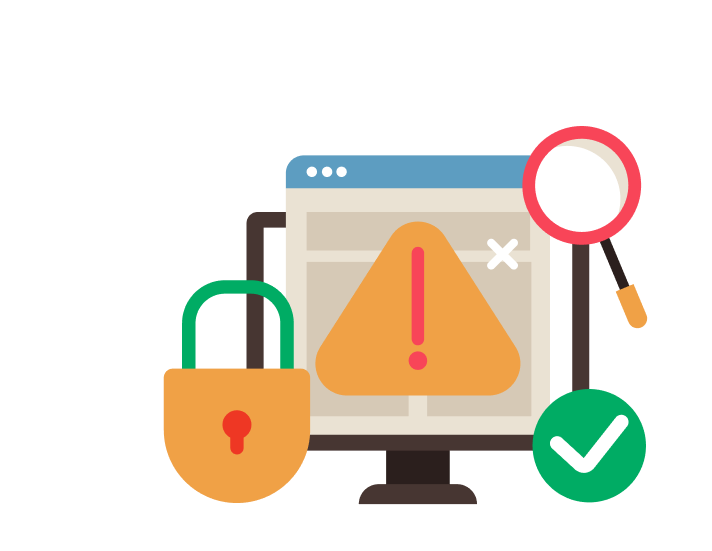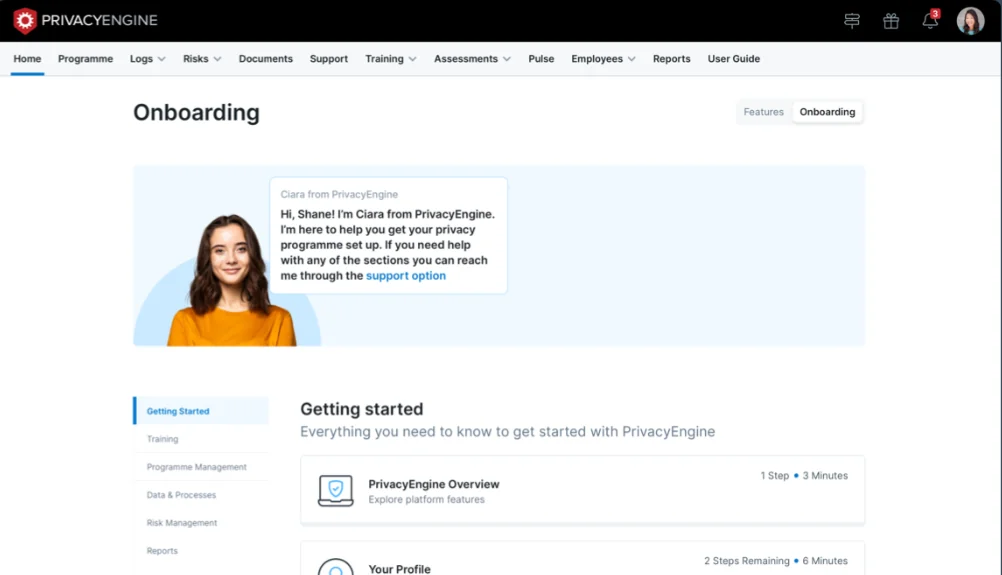Privacy risks have become a growing concern for individuals and organisations alike. With the increasing amount of sensitive data being collected and stored, it is essential to have effective tools and strategies in place for managing and mitigating these risks. One such tool that has gained popularity in recent years is Data Privacy Impact Assessments (DPGAs). In this article, we will explore the basics of DPGAs, their connection to privacy risks, the benefits they offer, as well as the challenges and future prospects of using DPGAs in privacy risk management.
Understanding the Basics of DPGA
Before delving into the specifics, it is crucial to have a clear understanding of what exactly a DPGA is. Essentially, a DPGA is a systematic process that organizations use to identify, assess, and mitigate the privacy risks associated with the processing of personal data. It involves taking a comprehensive look at an organisation’s data processing activities and evaluating the potential impact on individuals’ privacy rights and freedoms.
What is a DPGA?
A DPGA is a structured approach that helps organisations assess and manage privacy risks effectively. It involves a series of steps, including identifying the purposes and processing operations, evaluating the necessity and proportionality of the processing, and implementing measures to minimise the impact on individuals’ privacy. By conducting a DPGA, organisations gain a deeper understanding of the privacy risks they face, enabling them to implement appropriate safeguards and controls.
The Evolution of DPGA Technology
The concept of conducting privacy DPGAs has been around for some time. However, recent advancements in technology have greatly transformed the way DPGAs are conducted. The availability of powerful data analysis tools and automation has made it easier for organisations to analyse large volumes of data and identify potential privacy risks. Additionally, integrating artificial intelligence and machine learning algorithms has further enhanced the accuracy and efficiency of DPGAs, enabling organisations to gain more comprehensive insights into their data processing activities.
One of the key advancements in DPGA technology is the development of sophisticated software applications specifically designed to facilitate the assessment process. These applications utilise advanced algorithms to analyse various aspects of data processing, such as data collection, storage, and sharing. By automating the assessment process, organisations can save time and resources while ensuring a thorough evaluation of privacy risks.
Furthermore, the evolution of cloud computing has also significantly impacted DPGA technology. Cloud-based solutions offer organisations the ability to store and process large amounts of data securely and efficiently. This scalability and flexibility enable organisations to conduct DPGAs on a larger scale, accommodating the growing complexity of data processing activities.
Another important aspect of the evolution of DPGA technology is the increasing focus on privacy by design and default. This concept emphasises the integration of privacy considerations into the design and development of systems, processes, and products. By adopting privacy-by-design principles, organisations can proactively address privacy risks from the outset, minimising the need for extensive DPGAs later on.
Moreover, the emergence of new regulations and legal frameworks, such as the General Data Protection Regulation (GDPR), has also influenced the evolution of DPGA technology. These regulations have placed a greater emphasis on privacy and data protection, making it essential for organisations to conduct thorough DPGAs to ensure compliance. As a result, DPGA technology has evolved to provide more comprehensive and detailed assessments to meet the requirements of these regulations.
In conclusion, the evolution of DPGA technology has significantly enhanced the effectiveness and efficiency of privacy impact assessments. With advancements in data analysis tools, automation, artificial intelligence, and cloud computing, organisations can now conduct more thorough and comprehensive DPGAs to identify and mitigate privacy risks effectively. By embracing these technological advancements, organisations can ensure the protection of individual privacy rights and maintain compliance with relevant regulations.
The Connection Between DPGA and Privacy Risks
DPGAs play a crucial role in helping organisations understand and address privacy risks effectively. By conducting a thorough assessment of their data processing activities, organisations can identify potential vulnerabilities and take proactive measures to mitigate the risks. This section will explore how DPGAs work to identify privacy risks and provide real-life examples of their application in privacy risk management.
People are increasingly concerned that their privacy is at risk due to the vast amount of personal data that organisations collect and process. It is crucial to have mechanisms in place to identify and manage these risks. This is where Data Protection Impact Assessments (DPIAs) come into play.
DPGAs are a systematic approach to evaluating the potential risks and impacts of processing personal data. They involve analysing various factors, such as the types of data collected, the purposes for which it is processed, the individuals involved, and the potential impact on their privacy rights and freedoms.
By examining these factors, organisations can gain a comprehensive understanding of their data processing practices and identify any potential weaknesses or vulnerabilities that may pose a risk to individuals’ privacy. This allows them to take appropriate measures to address these risks and ensure compliance with privacy regulations.
How DPGA Works to Identify Privacy Risks
The primary objective of a DPGA is to identify potential privacy risks associated with the processing of personal data. This is achieved through a systematic analysis of the data processing activities, including the types of data collected, the purposes for which it is processed, the individuals involved, and the potential impact on their privacy rights and freedoms. By examining these factors, organisations can uncover any weaknesses or vulnerabilities in their data processing practices and take appropriate measures to address them.
During a DPGA, organisations typically conduct a detailed inventory of the personal data they collect and process. This includes identifying the sources of the data, the categories of individuals whose data is collected, and the purposes for which the data is used. By mapping out this information, organisations can identify any potential risks associated with the data processing activities.
Furthermore, organisations also assess the security measures in place to protect personal data. This includes evaluating the adequacy of technical and organisational measures to prevent unauthorised access, accidental loss, or unlawful processing of personal data. By identifying any gaps in security measures, organisations can strengthen their data protection practices and reduce the risk of privacy breaches.
DPGAs also involve assessing the potential impact on individuals’ privacy rights and freedoms. This includes considering the sensitivity of the data being processed, the potential harm that could result from unauthorised or inappropriate processing, and any measures in place to mitigate these risks. By evaluating the potential impact, organisations can prioritise their efforts to address high-risk areas and ensure the protection of individuals’ privacy.
Real-life Examples of DPGA in Privacy Risk Management
There are numerous real-life examples of organisations using DPGAs to manage privacy risks effectively. For instance, a multinational technology company conducts a DPGA before launching a new product that collects personal data. By conducting a thorough assessment of the data processing activities, the organisation can identify potential privacy risks, such as unauthorised access or misuse of personal information. Based on the findings of the DPGA, the organisation can implement additional security measures or modify its data processing practices to mitigate these risks and protect individuals’ privacy.
Another example is a healthcare organisation that conducts a DPGA when implementing a new electronic health record system. By analysing the data processing activities, the organisation can identify potential risks, such as unauthorised access to patients’ medical records or breaches of confidentiality. The DPGA allows the organisation to implement appropriate safeguards, such as access controls and encryption, to protect patients’ sensitive health information and ensure compliance with privacy regulations.
DPGAs are not limited to large organisations or specific industries. Small businesses and startups can also benefit from conducting DPGAs to identify and address privacy risks. For example, an e-commerce startup that collects customer data for marketing purposes can conduct a DPGA to assess the risks associated with data processing and implement measures to protect customer privacy, such as secure data storage and opt-out options for marketing communications.
In conclusion, DPGAs are valuable tools for managing privacy risks. By conducting a thorough assessment of data processing activities, organisations can identify potential vulnerabilities and take proactive measures to mitigate the risks. Real-life examples demonstrate the effectiveness of DPGAs in protecting individuals’ privacy and ensuring compliance with privacy regulations.
The Benefits of Using DPGA for Privacy Risk Assessment
DPGAs, or Data Privacy Gap Assessments, offer a range of benefits for organisations seeking to assess and manage privacy risks effectively. This section will explore two significant advantages of using DPGAs – enhanced data protection and improved compliance with privacy regulations.
Enhanced Data Protection
By conducting a DPGA, organisations gain a deeper understanding of the privacy risks associated with their data processing activities. This enables them to implement appropriate safeguards and controls to protect individuals’ personal data.
For example, an e-commerce company conducting a DPGA may identify potential vulnerabilities in its data-sharing practices. By implementing encryption protocols and access controls, the company can enhance the security of the personal data it processes, reducing the risk of unauthorised access or data breaches.
Furthermore, conducting a DPGA allows organisations to identify potential gaps in their data protection measures. This includes assessing the adequacy of their data storage and retention practices, ensuring that personal data is only retained for as long as necessary and securely disposed of when no longer needed.
DPGAs also enable organisations to evaluate the effectiveness of their incident response and breach notification procedures. By conducting regular assessments, organisations can identify areas for improvement and enhance their ability to respond swiftly and effectively to data breaches, minimising the potential impact on individuals’ privacy.
Improved Compliance with Privacy Regulations
With the increasing number of privacy regulations, such as the General Data Protection Regulation (GDPR), organisations face growing pressure to ensure compliance with these regulatory requirements.
DPGAs can serve as an essential tool for organisations to demonstrate their commitment to privacy compliance. By conducting a DPGA and implementing the necessary measures to address identified privacy risks, organisations can showcase their dedication to protecting individuals’ privacy and avoiding potentially costly fines or legal repercussions.
Furthermore, DPGAs help organisations stay current with evolving privacy regulations. As new laws and regulations are introduced, conducting regular assessments allows organisations to identify any gaps in their compliance efforts and take appropriate action to address them.
DPGAs also provide organisations with a comprehensive view of their privacy practices, facilitating the development and implementation of privacy policies and procedures that align with regulatory requirements. By conducting thorough assessments, organisations can ensure that their privacy programs are robust and effective, promoting a culture of privacy within the organisation.
In conclusion, DPGAs offer enhanced data protection and improved compliance with privacy regulations. By conducting regular assessments, organisations can identify and address privacy risks, strengthen their data protection measures, and demonstrate their commitment to privacy compliance.
Challenges and Limitations of DPGA in Privacy Risk Management
While DPGAs offer numerous benefits, it is important to acknowledge the challenges and limitations associated with their implementation. This section will discuss two significant considerations – technical challenges and regulatory and legal considerations.
Technical Challenges
One of the primary challenges organisations face when conducting DPGAs is the technical complexity of the process. Analysing large volumes of data and identifying potential privacy risks requires advanced data analysis tools and expertise. Organisations must invest in robust infrastructure and employ skilled professionals to carry out effective DPGAs. Additionally, the rapid advancements in technology mean that organisations must continuously update their DPGA methodologies to keep up with evolving privacy laws.
Regulatory and Legal Considerations
Another challenge organisations face when conducting DPGAs is navigating the complex landscape of privacy regulations and legal requirements. Different countries and jurisdictions have varying privacy laws, each with its own set of requirements for conducting DPGAs. Organisations must ensure they comply with these regulations while conducting their assessments. Failing to do so can result in potential legal and reputational risks.
Future Prospects of DPGA in Privacy Risk Management
Despite the challenges, the future prospects of using DPGAs in privacy risk management are promising. This section will explore emerging trends in DPGA technology and discuss the role DPGAs may play in the future of privacy risk management.
Emerging Trends in DPGA Technology
As technology continues to advance, new trends in DPGA technology are emerging. For example, the integration of blockchain technology in DPGAs offers the potential for enhanced data security and transparency. By leveraging the immutability and decentralisation features of blockchain, organisations can ensure the integrity and privacy of personal data throughout the assessment process. Other emerging trends include using advanced analytics and machine learning algorithms to streamline the assessment process, making it more efficient and accurate.
The Role of DPGA in the Future of Privacy Risk Management
Looking ahead, DPGAs are likely to play an increasingly important role in privacy risk management. As the volume and complexity of data processing activities continue to grow, organisations will need effective tools and methodologies to assess and mitigate privacy risks. DPGAs provide a structured approach that offers organisations a deep understanding of the privacy risks they face, enabling them to make informed decisions and implement appropriate controls. Furthermore, as privacy regulations continue to evolve and become more stringent, conducting DPGAs will become essential for organisations to demonstrate their commitment to privacy compliance and gain the trust of individuals.
Conclusion
In conclusion, DPGAs offer organisations a powerful tool for understanding and managing privacy risks effectively. By conducting a thorough assessment of their data processing activities, organisations can identify potential vulnerabilities and take proactive measures to mitigate these risks. DPGAs provide enhanced data protection and facilitate compliance with privacy regulations. While there are challenges and limitations associated with conducting DPGAs, the future prospects of using DPGAs in privacy risk management are promising. As technology continues to advance, DPGAs will play an increasingly important role in helping organisations navigate the complex landscape of privacy risks and regulations.
Join us today. Schedule your FREE Consultation now!




